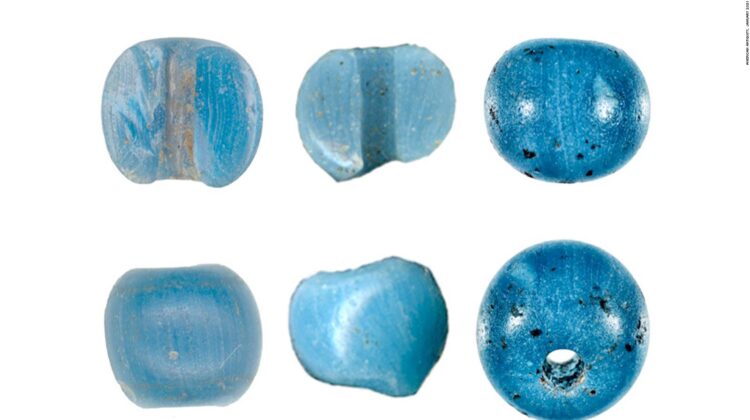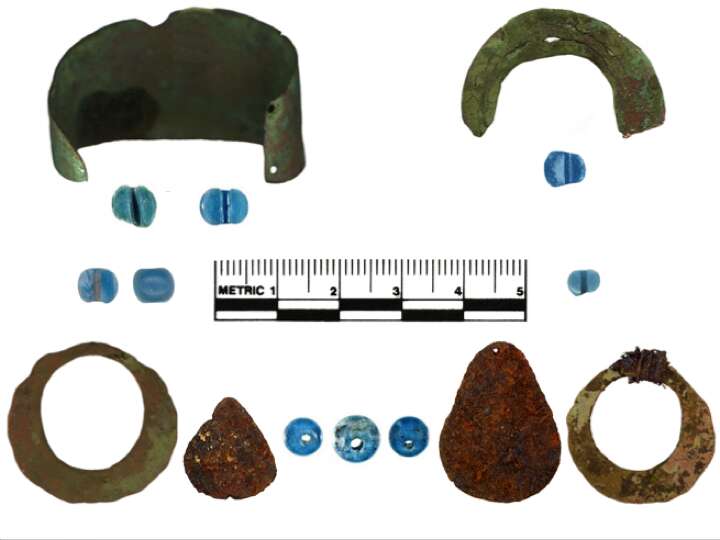
It’s time to rewrite history books once more, although you’ll need to buy a new history book if you still believe Christopher Columbus “found” America in 1492. Venetian glass beads from the Renaissance period unearthed in Alaska show they predate Columbus’ arrival by decades, making them the first known European commodities in the Americas. This suggests that long before Columbus arrived, Indigenous North Americans had contact with individuals who had either traveled to Italy or traded with those who had.
The Vikings are widely acknowledged as the first Europeans to set foot on continental North America. Nearly 500 years before Columbus, Leif Erikkson, an Icelandic Norse explorer, undertook the first European trip in pursuit of the “New World,” with the oldest known Norse colony located in Newfoundland, Canada, dated from 1000 CE.

Venetian blue glass beads unearthed at three archaeological sites in Alaska date from the mid to late 15th century, putting Columbus even further back in line. These blue glass “trade beads” had already been discovered throughout North America, as well as the Caribbean and Central America’s east coast, but they date from 1550 to 1750. Two archaeologists used mass spectrometry carbon dating to determine that these beads were made between 1440 and 1480.
What were glass beads from Venice’s Murano Island, which is still known for its glasswork, doing halfway across the world on a continent that Europeans had never heard of, and how did they get there?
Authors Michael Kunz of the University of Alaska Museum of the North and Robin Mills of the Bureau of Land Management report in the journal American Antiquity that these beads were brought to Alaska by traders who traveled China’s Silk Road, through Siberia, and eventually crossed the Bering Strait to Alaska.
This makes them “the earliest recorded case of indubitable European elements in ancient sites in the Western Hemisphere as a result of overland transportation across the Eurasian continent,” according to the scientists.

Punyik Point, a recognized seasonal location for Inuit peoples, Lake Kaiyak House, and Kinyiksugvik, all of which date to the Late Prehistoric indigenous era, were discovered with the glass beads. Glass beads had already been discovered at these sites in the 1950s and 1960s, but when Kunz and Mills discovered more, along with bronze jewelry and, most critically, twine, they had a method of dating these objects that earlier archaeologists had not: mass spectrometry carbon-dating.
They also discovered copper bangles, flat metal shaped sheets that may be hoop earrings, and what seemed to be fragments of a necklace or bracelet, in addition to the beads. They discovered some twine made of some form of plant fiber, likely the bark of a willow bush, wrapped around a copper bracelet that had miraculously survived. They sent the twine out for carbon dating, and the findings came back a few months later, shocking them.
Kunz told the University of Alaska Fairbanks, “We almost fell over backwards.” “It said (the plant) was living in the 1400s,” said the researcher. “Wow!” I said.
This finding, which is supported by the date of charcoal and other artefacts discovered alongside the beads at all three locations, shows that North America need a new timeframe.
Venice was Europe’s leading glass-making hub in the 1400s, and workers were known to sell Murano glass, which was already well-known, with people all around Asia and the Ottoman Empire. The beads may have been purchased and sold in Venice, then transported by horse-drawn cart over the Silk Road, a historic trade route connecting Europe and the Mediterranean to Asia, before arriving in the Russian Far East and eventually the Bering Strait, a known site of passage to the Americas.
These beads provide the earliest evidence of an overland connection between Europe and Alaska, long before Christopher Columbus and the European colonists sailed across the ocean blue in 1492 to find this long-existing “New World.”
